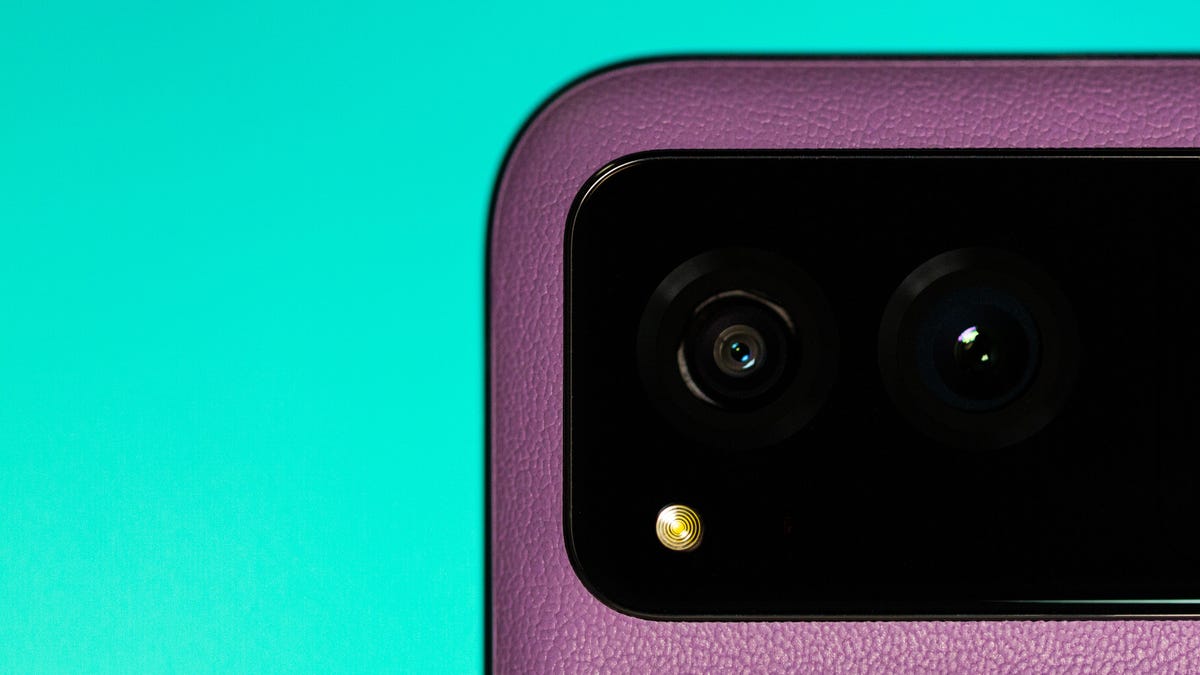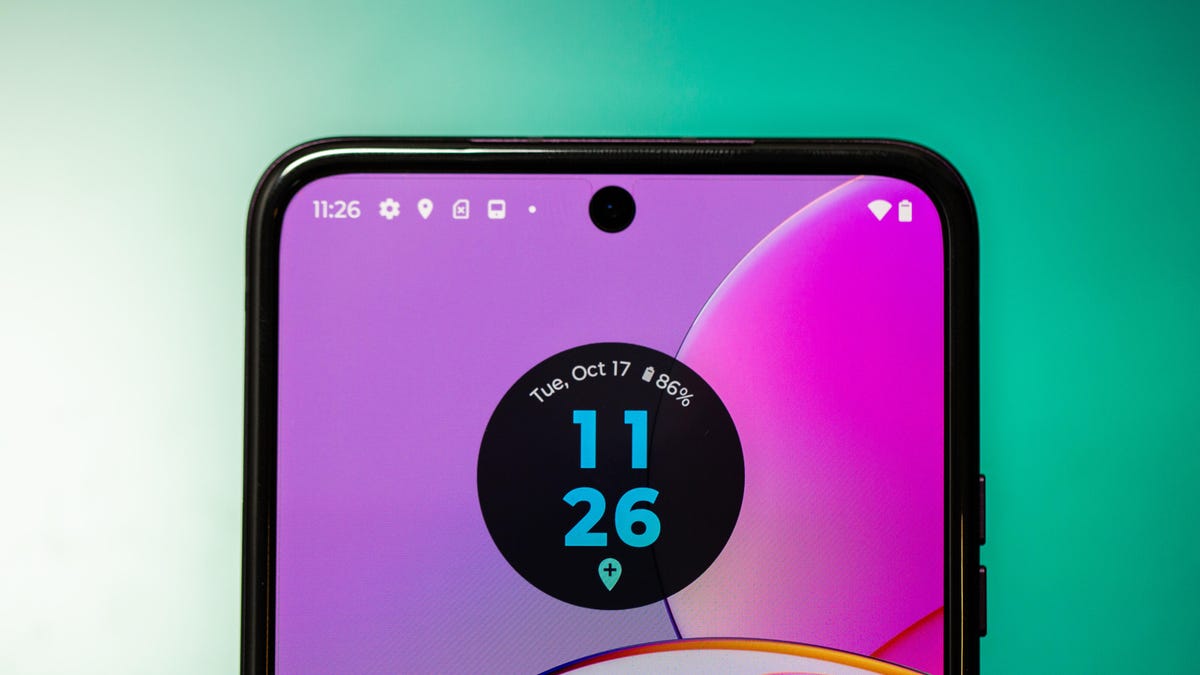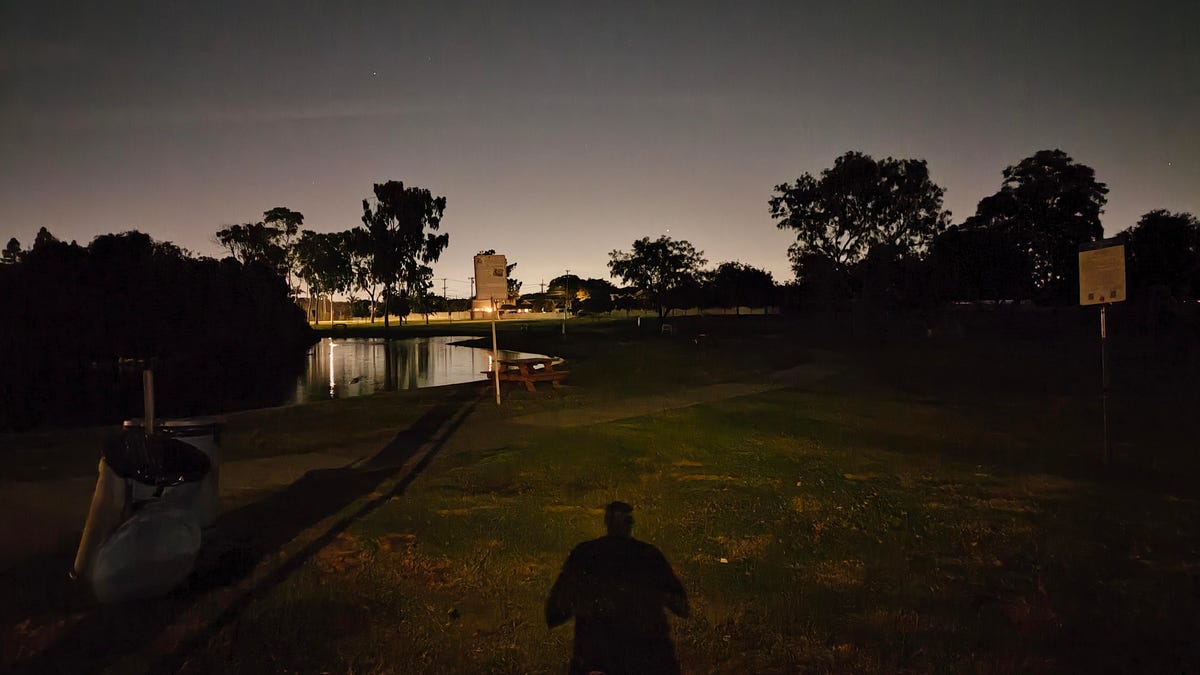
Phonemakers like TCL have been working toward cheaper foldables for years, but Motorola is the first to widely release a foldable that has a premium look and feel at a significantly lower price than its clamshell foldable competitors.
Motorola made some compromises to get a lower price, including a smaller front display and less advanced specs than its pricier counterparts. These are understandable tradeoffs, but harder to swallow is the single configuration of 128GB of storage that isn’t expandable — if you want more space, you’ll either have to rely on a cloud solution or pay up for the $1,000 Razr Plus 2023, which has 256GB of included storage (and isn’t expandable either).
But if you want a neat and compact phone, you’ll need to make some sacrifices for the Razr 2023 which Motorola has discounted to $600 at launch.
Design
At first glance, the Motorola Razr 2023 might be mistaken for a Galaxy Z Flip 5 as both have followed a parallel design evolution. The Razr abandoned its eccentric flip phone design roots to seemingly follow Samsung’s lead with a more contemporary vibe. The Razr 2023 looks like a regular phone that folds in the middle. When unfolded flat, there’s a nominal crease in the display at the midpoint that I didn’t notice when looking at it or by running my finger over the screen.
All in all, the Razr 2023 feels good to hold. Its solid build quality feels reassuringly dense — I folded it up and did a few test drops on my carpeted floor without worrying that the halves would come apart. The phone closes with a satisfying snap, and when unfolded, the two halves come together in the back to meet seamlessly over the hinge cover. While the device is a little tough to open one-handed given additional resistance in the hinge, that also means the Razr stays partially unfolded at any angle — great for video calls or selfies using the inner screen’s camera.
Folding aside, the design looks premium, with a polished aluminum frame and hinge cover, while the vegan leather back cover adds some needed texture — I’m used to a full-size phone, so a folded-up clamshell has half the footprint and took time to get used to holding. The glass strip on the top half of the back of the phone covers both the external dual cameras and the small outer display, which looks svelte.
Unfolding the phone reveals the tall and narrow 6.9-inch OLED display (2,640×1,080 pixels) with a variable refresh rate up to 144Hz, which shows sharp and vivid details comparable to other 1080p Full HD resolution phones. The Razr’s up to 144Hz variable refresh rate makes browsing the internet or navigating the home screen buttery smooth. In having a fully functional inner display, the Razr 2023 is on par with other clamshell foldables, but the outer screen is another story.
Instead of the larger outer display of its Razr Plus 2023 sibling, the Razr 2023 has a 1.5-inch OLED external screen that’s too small to show much more than the time, app notifications, and a handful of shortcuts to weather, calendar events, contacts, voice recording and more. It’s about as useful as checking my smartwatch for snapshots of notifications and texts to triage whether I need to open my phone, and it’s helpful to take selfies with the rear cameras (far sharper than the one above the inner display), but it generally leaves me wanting more.
The smaller outer display is the Razr 2023’s most obvious compromise to get to the lower price — the pricier Razr 2023 Plus’ foldable’s 3.6-inch outer display is large enough to fit a keyboard to type on, though most users will probably only use it primarily as a notification and app preview screen, as well as to preview selfies.
Note that there isn’t a camera shortcut on the outer display — instead, you’ll need to use Motorola’s signature gesture shortcut to open the camera (twist your wrist twice while holding the device), which is thankfully reliable. And yes, the brand’s gesture shortcut to turn on the flashlight (making a chop motion twice) also works while the Razr is folded or unfolded.
Performance and battery
The Razr 2023 also takes a dip in hardware for a lower price, packing a Snapdragon 7 Gen 1 chipset that was released in mid-2022. The Razr 2023’s performance benchmarks are noticeably lower than phones rocking the Snapdragon 8 Plus Gen 1 found in the Razr Plus 2023 alongside other leading Android phones from this year. See the graph below:
Geekbench V.6.0 (Single-core)
Motorola Razr 2023 3,063Motorola Razr Plus 2023 4,318Samsung Galaxy Z Flip 5 5,116Oppo Find N3 Flip 3,350
3DMark – Wild Life Extreme


Main camera
It captures sharp details and good color, as can be seen in this pic of a suitably vibrant salad.

Ultrawide camera
Now look at the same room shot by the main camera:

Ultrawide camera (in macro mode)
The Razr 2023 doesn’t have a telephoto lens, and doesn’t give users an option for digital zoom — taking a main camera photo and cropping in is the only option. Most clamshell foldables, including the Razr Plus 2023 and Z Flip 5, lack zoom lenses and miss out on distance photography — though the Oppo Find N3 Flip managed to pack one in.


Inner selfie camera
Now look at a shot with the outer 64-megapixel main camera:

Main camera
Ultimately, the Razr 2023’s camera suite makes it feel more midrange than premium — but so long as users only need to shoot distant or landscape shots, the main camera serves just fine. And given its front-facing and selfie options, it’s a phone suited for the kind of casual and social photographers that are likely attracted to a clamshell foldable anyway, especially one at this price point. If folks want a more camera-focused phone, they can go with a Galaxy S23 Ultra, iPhone 15 Pro Max or Google Pixel 8 Pro — and pay a good amount more for it.
Razr 2023 final thoughts
There are certainly folks who the Razr 2023 will be perfect for, but they may fall in two camps: those who don’t quite have the budget to pay $1,000 for a Razr Plus 2023 or Galaxy Z Flip 5, and those who want the fun clamshell format and are fine passing on the better photos taken by and the AI-powered editing tools in the similarly priced $700 Google Pixel 8.
The Razr 2023 challenges the idea that consumers aren’t buying foldables because they’re too pricey. Will they show up for the most accessible flexible-display phone yet? Or will the market segment that can pay $700 continue shelling out around $1,000 for the latest-and-greatest in phone tech? The Razr 2023 makes a couple questionable choices in its list of compromises, but is overall shrewd in trimming features to get to a significantly lower price point than its competitors. It’s fun to use, looks attractive and trickles down cool innovations to the upper cusp of the midrange market, but it remains to be seen if consumers want style over cameras as much as a reviewer like me does.
Motorola Razr 2023 vs. Motorola Razr Plus 2023 vs. Samsung Galaxy Z Flip 5
How we test phones
Every phone tested by CNET’s reviews team was actually used in the real world. We test a phone’s features, play games and take photos. We examine the display to see if it’s bright, sharp and vibrant. We analyze the design and build to see how it is to hold and whether it has an IP-rating for water-resistance. We push the processor’s performance to the extremes using both standardized benchmark tools like GeekBench and 3DMark, along with our own anecdotal observations navigating the interface, recording high-resolution videos and playing graphically intense games at high refresh rates.
All the cameras are tested in a variety of conditions from bright sunlight to dark indoor scenes. We try out special features like night mode and portrait mode and compare our findings against similarly priced competing phones. We also check out the battery life by using it daily as well as running a series of battery drain tests.
We take into account additional features like support for 5G, satellite connectivity, fingerprint and face sensors, stylus support, fast charging speeds, foldable displays among others that can be useful. And we of course balance all of this against the price to give you the verdict on whether that phone, whatever price it is, actually represents good value. While these tests may not always be reflected in CNET’s initial review, we conduct follow-up and long-term testing in most circumstances.
